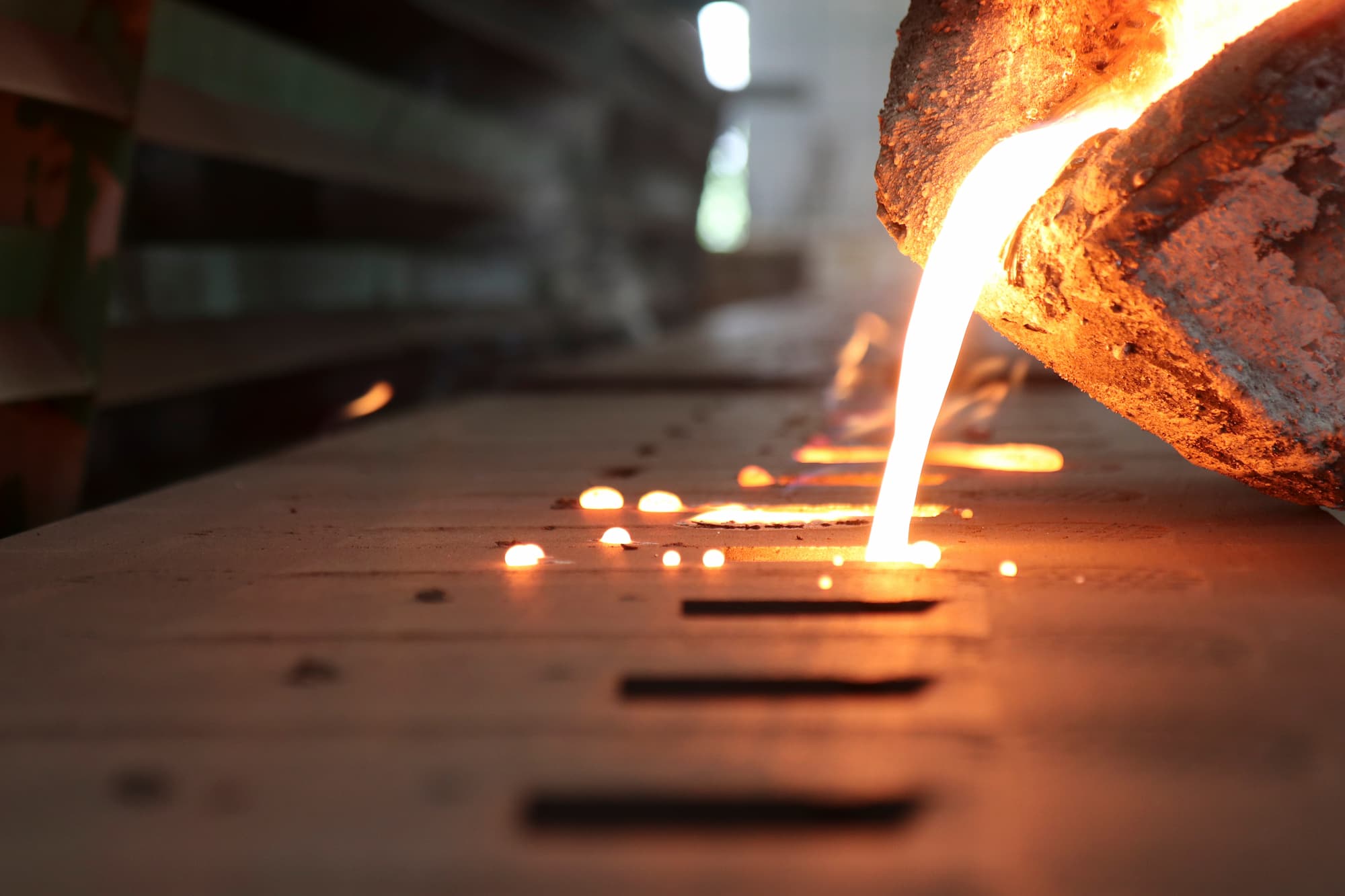Due to the high level of diversity among casted products, there are many distinct casting processes to satisfy different technical specifications. The molds used with these techniques fall into two overarching categories: expendable and reusable.
Expendable molds are consumed during the casting process, while reusable molds can be kept in service as long as they’re in acceptable functional condition. Some casting processes combine the two categories by pairing expendable cores with a reusable mold to create more intricate internal components.
Design Parameters
The ideal casting process and type of mold will depend mainly upon the design of the final casted product. For manufacturers who work with multiple raw materials, expendable and reusable molds may be used in the same facility for two separate product lines.
Dimensional tolerance is crucial since some products may need to be as precise as possible, eliminating techniques that can’t accommodate near-net casting. Different casting processes' temperatures and injection rates affect precision and shrinkage during cooling.
Manufacturers must also evaluate surface finishing on the casted product's outer side and the inner bore. Some products, such as cast-iron pump housings, can tolerate impurities or uneven edges without posing a quality-control issue. Other items must be treated carefully to maximize strength and eliminate granularity.
Lastly, the final product's shape will also play a role. In general, reusable molds can tolerate more intricate designs than expendable molds. Still, the geometry of the casted object must allow the mold to open once the casting process is complete.
Costs & Production
Reusable molds have high associated tooling and pattern-development costs. These added upfront expenses can sometimes be justified by a lower individual cost per part for manufacturing operations with substantial volume. Expendable molds are advisable for shorter production runs due to the affordability of base materials like sand or plaster.
Reusable molds are excellent for casting processes that require mass output of precise products. Strong reliability, shorter cooling periods, and minimal waste to clean between cycles allow for increased automation with faster production speeds.
By contrast, expendable molds excel at producing casted products that don’t need fine finishes or exact dimensions. Since sand and plaster can’t be cooled with water, casting processes with expendable molds take longer to complete.
Manufacturers must also consider ancillary expenses such as occupational safety and environmental protection when calculating casting costs. Expendable molds, which are overwhelmingly made of sand, introduce respirable dust and silica to the workplace. Reusable molds can generate particulate-containing wastewater from cooling during the casting process. Mitigating these hazards can change the financial analysis of which molds are most economically sound.
Expendable Mold Casting Processes
Expendable molds can be made from various materials, including plaster, sand, and wax. They’re prevalent for casting ferrous metals and other materials whose melting points are prohibitively high for a reusable mold.
The following casting processes rely upon expendable molds:
- Sand Casting: Molds and internal cores are made of sand blended with a bonding agent such as clay or a polymer. Patterns are simple to make so that engineers can quickly execute design modifications. The end product is rougher in appearance with lower precision.
- Shell Casting: Molds are made of a sand-resin blend heated into a hardened shell to produce a fine surface finish. This method is best suited to smaller items.
- Investment Casting: Patterns are waxed and then sealed with a refractory ceramic coating. The wax is drained to leave space for the metal to be cast. Investment casting is frequently used for complex shapes with fine finishes.
- Plaster Casting: Plaster molds are used to produce near-net castings. The plaster has a low melting point, limiting its versatility.
- Lost-Foam Casting: This process is similar to investment casting but uses foam instead of wax. The foam doesn’t need to be drained.
Reusable Mold Casting Processes
Reusable molds are commonly utilized with materials that have a low melting point. Therefore, metal alloys can be cast in reusable molds without issue. Casting processes that require more heat, such as making cast-iron products, can compromise the structural integrity of the mold over time.
The most popular casting processes that involve reusable molds include:
- Permanent Molding: Molds are made of a material with a higher heat tolerance than the metal to be cast. Patterns can incorporate simple reusable cores.
- Centrifugal Casting: Metal is injected into a water-cooled reusable mold as it’s rapidly rotated to produce a clean, even finish. It’s commonly used to make high-pressure piping.
- Die Casting: Both die halves are lubricated, pressed together, and filled using a pressurized injection nozzle. This technique is highly precise.
- Continuous Casting: Metal is poured into a water-cooled die that rapidly cools it into a solid, usually as a long slab that can be cut. This process produces a fine-grained microstructure with uniform density.
Before you begin the casting process, contact Transvalor USA to learn how our high-performance simulation software can help you maintain manufacturing quality, improve ROI, and even conquer new markets.


